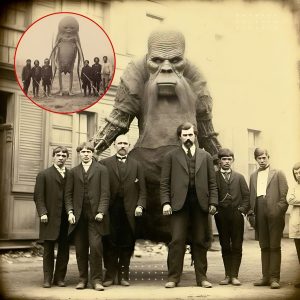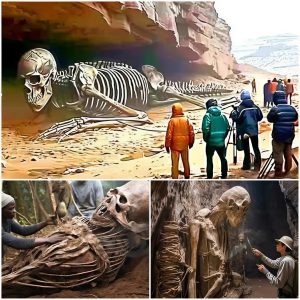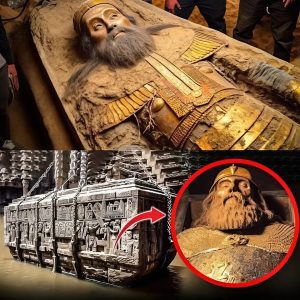A Fantastical Discovery in the Land of Ice and Fire
In a revelation that reads like a tale from the pages of folklore, archaeologists in Iceland have uncovered what appears to be the bones of a mermaid. This astonishing find, hidden away in a remote and frozen corner of the island, has solved a mystery that has baffled historians and mythologists for over a century. The discovery promises to rewrite our understanding of one of the most enduring legends of the sea.

The Bones Beneath the Ice
The mermaid bones were unearthed in a secluded archaeological dig, nestled within an ancient coastal settlement. The site, which had long been rumored to hold secrets of mythical proportions, finally yielded its treasure when archaeologists stumbled upon a set of skeletal remains unlike any they had encountered before. The bones, meticulously examined and documented, appear to blend human and aquatic features in a manner that closely matches historical descriptions of mermaids.
A Deep Dive into History
The legend of mermaids has been a part of human culture for centuries, with tales of these enchanting sea creatures appearing in the folklore of various cultures around the world. In Iceland, mermaid myths have been particularly persistent, with stories of these mysterious beings woven into the island’s rich tapestry of legends and sagas. Local lore often described mermaids as beautiful and elusive beings who lived in the ocean’s depths, occasionally venturing to the surface.
The discovery of these bones is significant because it aligns with long-standing Icelandic legends about mermaids, suggesting that there may have been more to the tales than mere fantasy. The bones, which exhibit a combination of human-like and piscine traits, such as elongated limbs and fin-like structures, provide tangible evidence that these myths could have had a basis in reality.
Anatomy of the Myth
The skeletal remains, now under intensive study, reveal features that have intrigued experts. The most striking aspect is the presence of a human-like torso combined with a lower half resembling that of a fish. The bones show signs of adaptation to an aquatic environment, including a streamlined form and modified limb structures that suggest the creature was well-suited for life in the water.
Researchers have also found evidence of possible specialized adaptations, such as enhanced respiratory structures, which could indicate that these beings were capable of surviving both in and out of water. The analysis of the bones is ongoing, but initial findings suggest that this discovery could provide valuable insights into the ecological and evolutionary history of the region.
A Cultural and Scientific Breakthrough
The implications of this discovery are profound. For centuries, mermaid myths were dismissed by many as mere folklore, but the discovery of these bones offers a compelling case for the existence of a creature that bridges the gap between myth and reality. The find has sparked a renewed interest in the study of ancient maritime cultures and their legends, with scholars eager to explore how such myths might have originated.
For Icelanders, the discovery holds a special significance. The country’s folklore is deeply intertwined with its natural landscape, and the mermaid bones provide a tangible link to the stories that have shaped the nation’s cultural identity. The find has been met with a mixture of awe and excitement, with many viewing it as a confirmation of the magical and mysterious aspects of their heritage.
The Legacy of the Find
As the bones are carefully analyzed and preserved, they are expected to be displayed in museums across Iceland, offering the public a rare glimpse into the world of legends and the creatures that inhabit it. The discovery also promises to attract interest from both tourists and scholars, eager to witness the bones and learn more about the mythical mermaid.
The mermaid bones have not only solved a centennial mystery but have also opened the door to new questions and explorations. What other myths and legends might be based on real creatures or events? What does this discovery tell us about the interaction between myth and reality?
A Tale Rediscovered
The mermaid bones unearthed in Iceland represent more than just a scientific breakthrough; they are a reminder of the power of myth and the enduring allure of the unknown. They invite us to explore the boundaries between fact and fiction, and to consider how legends can shape our understanding of the world.
In the frozen expanse of Iceland, a piece of mythical history has been brought to light, reminding us that even in our modern age, there are still wonders waiting to be discovered. As we continue to unravel the mysteries of the past, we are reminded that the line between reality and legend is often more fluid than we might imagine, and that the stories we tell can sometimes hold kernels of truth beyond our wildest dreams.





